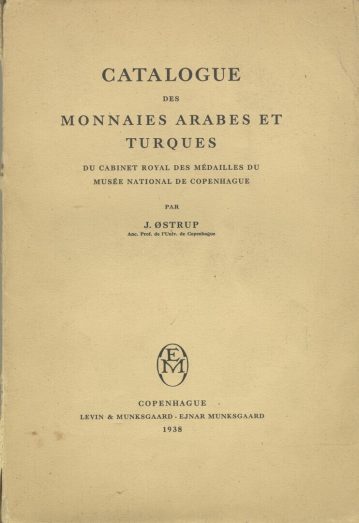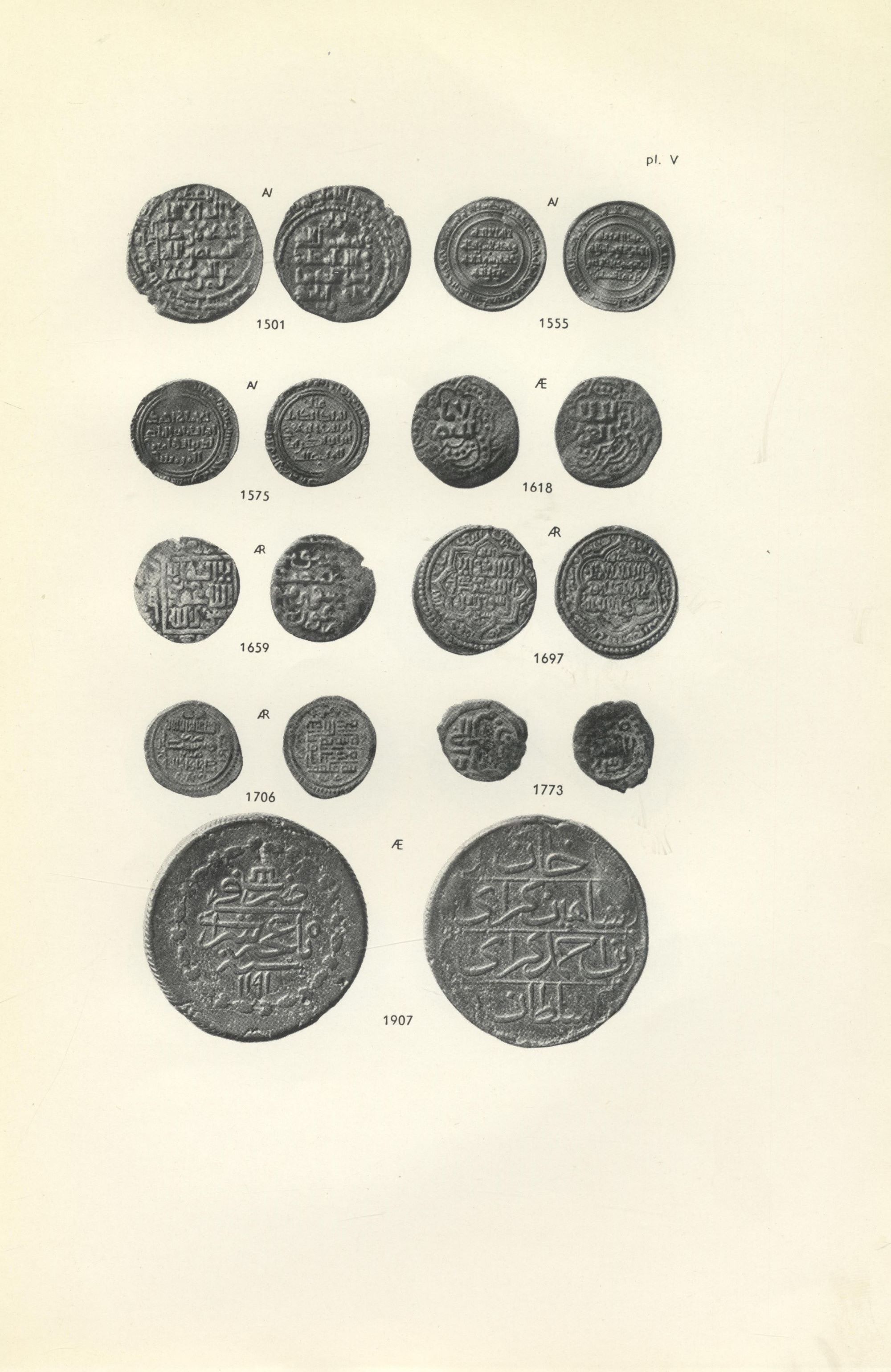Catalogue des Monnaies Arabes et Turques. Du Cabinet Royal des Médailles du Musée National de Copenhague.
Ostrup, J.
Synopsis
Johannes Elith Østrup (1867 – 1938) was a Danish philologist and professor at the University of Copenhagen where he served as rector from 1934 to 1935. In his own time, he had also read works on Sanskrit by the leading philologists of the day and had studied A.F. van Mehren’s literature on Semitic languages. While still a student, in 1889 he published a collection of translations titled Arabiske Sange og Eventyr (Arabic Songs and Fairy Tales). When 24, he became the youngest student ever to receive a doctorate as a result of his Studier over Tusind og en Nat (Studies of A Thousand and One Nights).
Østrup was interested in Arabic coins. He spent several years cataloguing the large collection found in Terslev (Zealand) in 1911. The results were published posthumously in this Catalogue des monnaies Arabes et Turques du Cabinet Royal des Médailles du Musée National de Copenhague (1938).
During the years 1891–1893, Østrup made a study trip to Egypt and Syria under primitive conditions, visiting the as yet little known Aneza Bedouin tribe. He rode an Arabian stallion some 4,500 km (2,800 mi) through Egypt, Syria and Asia Minor and back to Denmark. His travels, including his 60-day return from Istanbul to Copenhagen on horseback in August 1893, are vividly described in his Skiftende Horizonter (Changing Horizons, 1894). The trips represented an important stage in his development, not only as he was able to assimilate modern Turkish language and the Arabic dialects of Egypt and Syria but above all because he became fully adapted to the Middle Eastern way of life, showing special interest in local customs and traditions rather than just in language. He openly admitted he far preferred field trips to library-based research.








